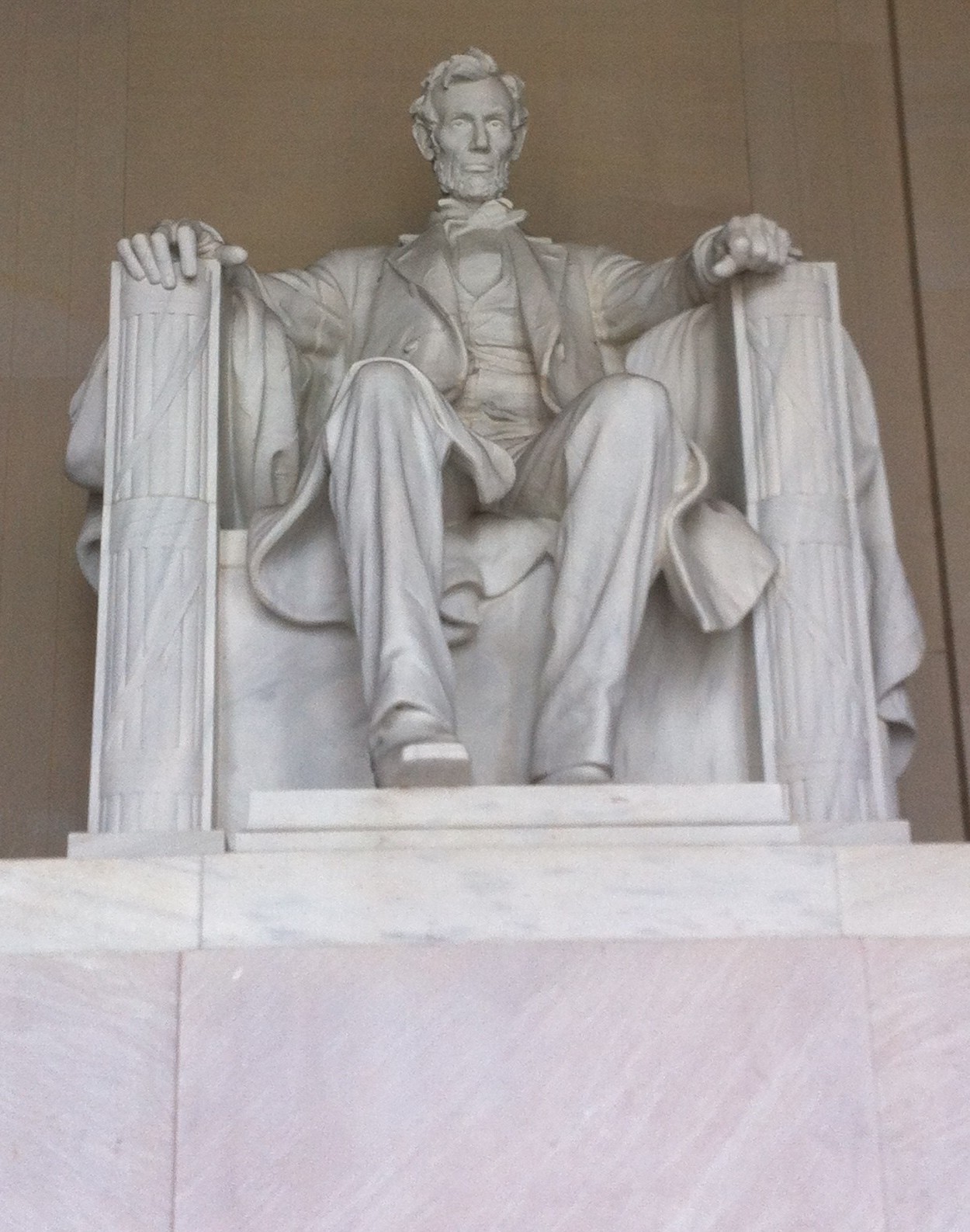– by Jon Cotton
I just visited Washington D. C. The Hope Diamond, once in the hands of King Louis XIV, is on display free of charge; the Capitol Building’s magnificent dome is visible from many angles around the city; the National Archives building houses the actual founding documents, and the Crime and Punishment Museum displays “murderbilia” from all the most famous serial killers. I saw the Watergate Building from a trolley, sipped elegant scotch, and met actual tour guides in person!
One of the most moving exhibits for me was the Lincoln Memorial. Structurally, it is an ancient Greek temple, carved in the geometric ratios discovered by Greece to foster spiritual gravity. Within the stone walls the student of history finds himself musing in echoes of the dream, as — in the dimension of past time — MLK jr speaks on the steps. The walls that flank the president speak in painted words:
Four score and seven years ago… gave the last full measure
and
With malice toward none…
For me Lincoln is an icon of courage, integrity, and compassion, as the monument is an icon of America, and, so America should be an icon of these values.
The statue and temple are made of beautiful white marble. Lincoln is seated comfortably, but he’s not tired. He is not forced to rest from weariness. Take a look; I think it’s clear even in the picture. The statue dramatically portrays a man prepared to move, totally relaxed, but ready for solemn action. A statesman, the moral leader of a nation. Look at the hands: relaxed, comfortable, confident. He’s relaxed. But, look, his body is tense. He has the youthful readiness to hop out of his chair and act, but the dread gravity of ageless wisdom exudes from his face.
There’s a Roman symbol on each side of the chair which symbolizes the intention of the sculptor and also reflects the American harkening to Roman tradition so prominent especially in the period when Lincoln was born. On each side of the chair, in front, there is a bundle of sticks held together by straps. Such a bundle of sticks is called a “fascis.” It was a Roman symbol of political authority and mastery. Lincoln is a great master, like a Caesar perhaps. It is also a symbol of unity, separate sticks making one bundle. Lincoln’s great cause, the theme he constantly repeated was unity, togetherness, expressed in his word “union” — “preserve the union,” “fight for the union,” etc.
The fascis was also used as a symbol by Mussolini because “fascis” is the root of the word “fascism,” which rather overdoes this idea of unity, to the point where it negates all individuality. That’s where it differs with our own tradition which through laws protects individuality and difference. Lincoln symbolizes unity but had no desire, as Mussolini did, to crush individuality.
Lincoln is a symbol of moral character. From Frank Capra’s Mr. Smith Goes to Washington in which Jefferson Smith finally stands on his convictions, to Lisa Simpson in “Lisa Goes to Washington,” where she, also, receives inspiration on the National Mall. In Lisa’s case, however, it is actually Thomas Jefferson from whom she takes courage, as the Lincoln statue is sadly mobbed with irreverent tourists who thwart her immediate wish.
The statue was designed by Massachusetts native and MIT graduate Daniel Chester French whose 15th birthday was the occasion of Lincoln’s expiration. People who first saw this sculpture remembered the man. When French made the statue he first made preliminary models. Here’s a picture of one at the Boston Museum of Fine Arts:
The maquette here depicted is about three feet high. The actual statue is 19 feet high, sitting on a pediment 11 feet high. French made other famous statues including John Harvard in Harvard Yard and the Minuteman Statue in Concord.
Lincoln visited Boston in 1848, when his eldest son was five years old. Robert Todd Lincoln (1843-1926) was a Harvard graduate. He attended the dedication of the Memorial in 1922. According to the National Park Service website
French was standing in the shadows of the east chamber one evening working on the lighting. He saw a limousine draw up in front of the memorial. With effort, an old man emerged from the vehicle and, with his head bent, slowly made his way up the steps. As he approached the statue he took off his hat and, resting on his cane, sank slowly to his knees. For a long time he remained kneeling, his head bowed, as if recalling memories that others had forgotten. Then Robert Todd Lincoln, the 83-year-old son of Abraham Lincoln, rose, walked down the steps, and disappeared into the night.
Robert died that same year, having become a prominent American leader in his own right and having been present at the assassinations of two presidents, and having been nearby when his father was assassinated. The only presidential assassination since those three was that of John Kennedy, whose grave is positioned in the Arlington National Cemetery so as to command a view of the Lincoln Memorial.
In other statue-of-lincoln news, a heart-wrenchingly cute kitten got stuck inside a Lincoln statue in Florida but was rescued.
Thank you for being a reader of bostontourguide.org



Great Article, JC. From now on there should be kittens at the end of every article, it will improve readership.